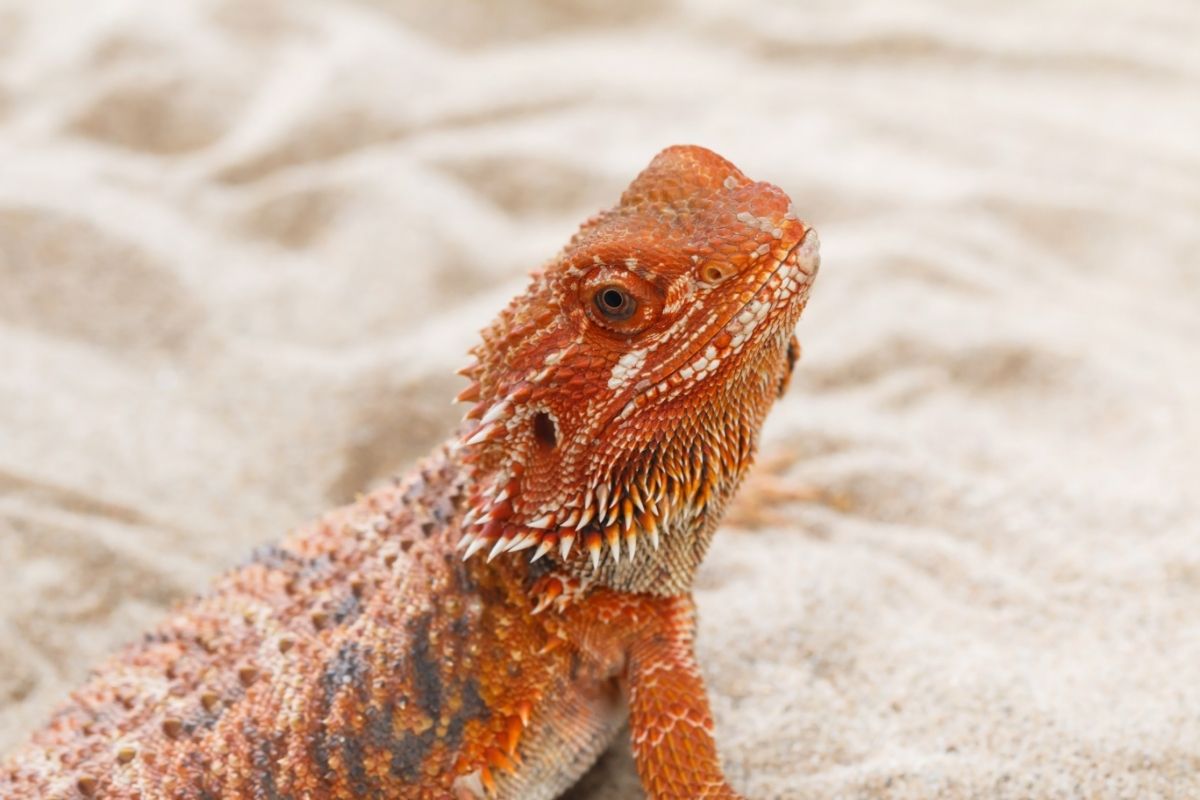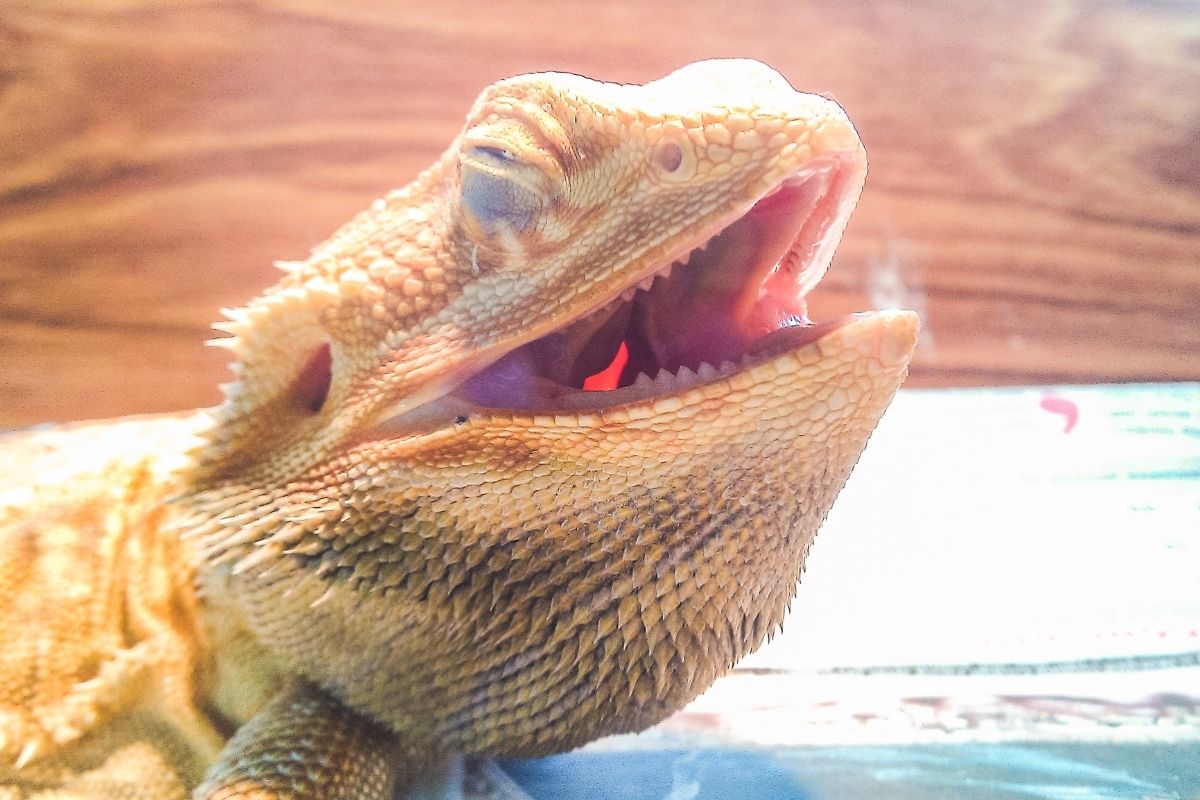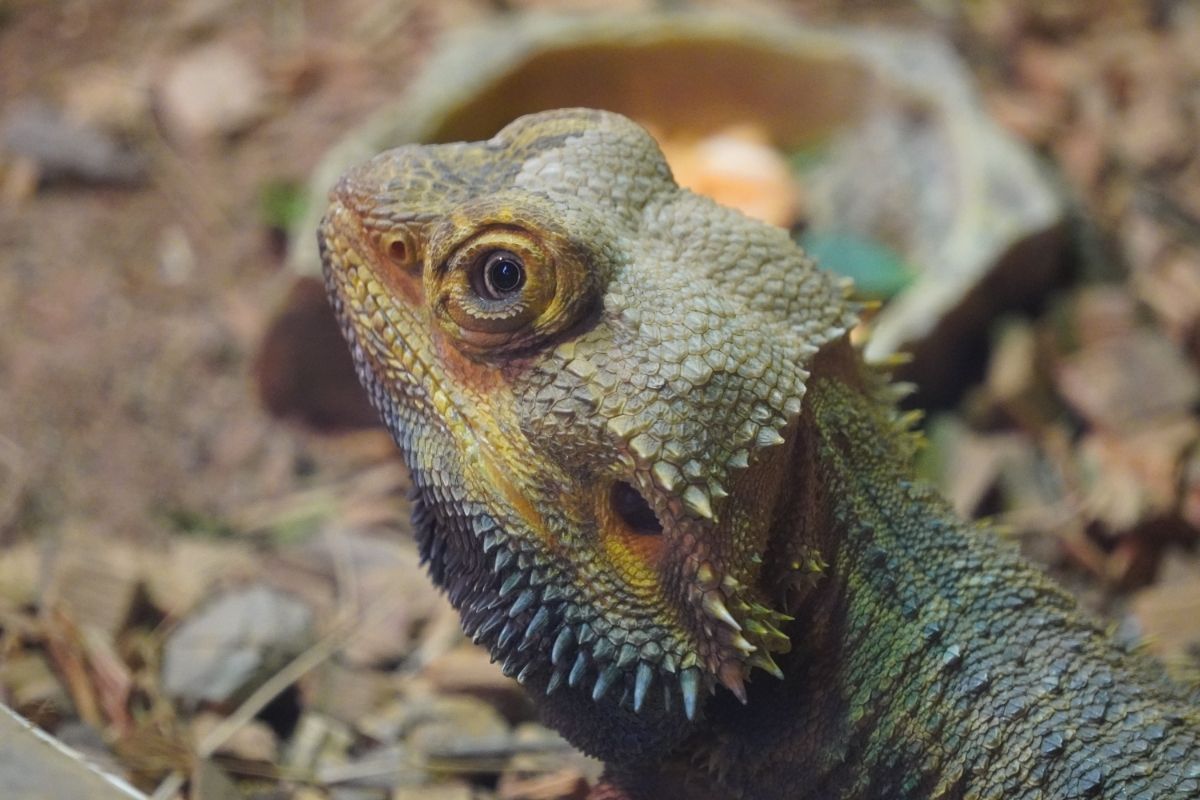Every living creature sheds skin and replaces its outer layer of skin, scale, or exoskeleton either at once or over a period of time.
Humans are constantly shedding skin, with cells flaking off every day without any notice.
Reptiles shed their outer scales all at once in a process called shedding, scientifically it is referred to as ecdysis.

The shedding process can be triggered by several factors, such as hormonal changes, humidity, growth, or diet.
Reptiles will go through this process many times during their life.
Below we have outlined 10 important facts that you need to know to help and support your bearded dragon as they go through the shedding process.
Bearded dragons shed at different times depending on their stage of life.
Growing dragons will shed every two to four weeks, and adult bearded dragons shed every few months.
This is a natural process, and below, we have outlined some key pieces of information you as an owner, should know about this process.
Baby Bearded Dragons Shed The Most
When you first get a baby bearded dragon, you will never imagine that one day it will be fully grown, but soon you will notice rapid physical changes.
As the baby dragon grows it needs to shed its skin often to accommodate its new larger body.
It is common for a growing dragon to go through the process as often as every couple of weeks until they reach full maturity.
Mature Bearded Dragons Shed In Patches
As bearded dragons grow the shedding process happens less frequently as their body is not going through rapid physical changes.
Once they have reached their full maturity they shed in patches during the year.
They may shed on certain parts of their body, such as their tail or their leg and if you aren’t expecting this you may get a fright some morning when you look into their tank!
While for the most part, they shed in patches it is normal for a full-body shed to happen occasionally to mature bearded dragons.
The Shedding Process Can Last Anywhere From A Few Days To Weeks

The length of the shedding process can vary depending on three influencing factors, which are the animal, the age of the animal, the type of shed, for example, whether it is a patch or a full-body shed, and the ambient conditions.
A shed should last somewhere between 3 days to 3 weeks.
It is important to note how long your pet is going through the shedding process, if it is lasting for more than 3 weeks you should speak to a veterinarian as this could suggest underlying issues or the shed may be stuck.
Appetite Loss Is Normal
If your bearded dragon has lost their appetite this could be a sign that they are about to begin a shed.
It is perfectly normal for the bearded dragon to continue to not eat as much or any food during the shed as this process is uncomfortable for them.
Continue to offer food to your bearded dragon so that when they are hungry they have food to eat.
Getting food that can be left in the tank can be useful during sheds but ensure you can clear it out of the tank easily if it is not eaten and begins to smell.
Lethargic Movements Are Common Before And After A Shed
You may notice a difference in your bearded dragon’s energy levels and they may be very lethargic.
The shedding process can be exhausting, and so this is very common. Try to limit interactions to prevent irritating your pet.
The Appearance Of Your Bearded Dragon May Change
Before the shedding process, you may notice that the coloring of your bearded dragon becomes darker and possibly duller.
This should not be confused with illness unless a shed does not happen and this change of color persists.
The skin will turn gray before it is shed and unveil a bright skin underneath, restoring your dragon friend to its previous bright appearance.
Your Bearded Dragons Eyes May Bulge

You may notice a change in the appearance of your pet’s eyes, they may start to look like they are swollen or slightly bulging.
This is intentional as the bearded dragon bulges its eyes to stretch the skin around its eyes, allowing them to shed in this tricky and sensitive area.
You Should Not Remove Any Of The Shed
A piece of shed that has not come off should not be removed by an owner.
Often this shed has stayed in place to protect sensitive skin underneath and it will fall off when the new skin is ready.
Tugging off the shed can cause injury to your pet.
While it can be tempting to pull your bearded dragon’s shed you should never do so if you meet resistance or if the shed is wet or moist.
You should make it a general rule that you do not intervene in this process.
Be Aware Of Stuck Shed
While you should not intervene with the removal of your bearded dragon shed you should still be keeping an eye on this process.
There is a condition called dysecdysis, or stuck shed as it is colloquially known, and this is when a bearded dragon has not been able to complete its shed.
An incomplete shed often affects areas such as the toes or tails of your pet and can cause restricted blood flow which can be deadly if untreated.
Mist your pet frequently to aid with the shedding process and add textured objects such as logs and rocks for your bearded dragon to use in the shedding process.
Warm baths can also be useful in the shedding process. This can loosen a stuck shed, and it should naturally detach.
If none of these tips help, you should consult your veterinarian for further advice before infection sets in.
Bearded Dragons Often Eat Their Shed
It is completely normal for bearded dragons to eat their shed.
This is a natural instinct from the wild as they would eat the shed to prevent larger animals from finding them.
By eating their shed they are also able to reabsorb nutrients from their old skin.
It is also believed that bearded dragons eat their shed to boost their calcium levels.
The shed is harmless to eat, and you should not be surprised if you notice your pet eating their old skin.
Frequently Asked Questions
Should You Mist Your Bearded Dragon When They Are Shedding?
It is very important to mist your bearded dragon when they are shedding, you should in fact make an effort to mist your pet more often as they can get very dry during this time.
You should also take care in the wintertime to mist your bearded dragon and the interior of their enclosure a few times a week to prevent them from becoming unwell due to being overly dry.
Do Bearded Dragons Become Grumpy When They Are Shedding?
It is completely normal for your bearded dragon to become grumpy while they are shedding.
This process can be very uncomfortable and they may be feeling quite sensitive and irritable. They may also seem aggressive when you try to handle or touch them.
This behavior can last anywhere for two or more weeks.
You should try to give your bearded dragon space during the shedding process to not cause them any unnecessary stress.
Does The Shedding Process Hurt A Bearded Dragon?
Shedding is a necessary function of the skin in humans and animals, including reptiles and bearded dragons.
This process is not painful for bearded dragons but as they shed their entire skin the process can last a number of weeks which can make them uncomfortable.
They are not in any pain during this process.
Final Thoughts
We hope that this guide has provided useful tips and tricks that will enable you to support your bearded dragon during the shedding process to make this process as comfortable as possible for them.
If your bearded dragon experiences anything that we have not mentioned in this guide, we recommend speaking with a veterinarian to check what your bearded dragon is experiencing is normal.
This is a great way of keeping your bearded dragon healthy and a way of preventing any health issues from festering for a period of time.
